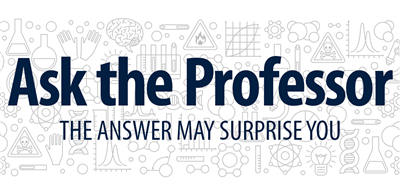The Massive Costs of Failing to Prevent Child Sexual Abuse – Governing

Report on the Socio-Economic Costs of Child Abuse and Alignment with Sustainable Development Goals
1.0 Introduction: The Financial and Societal Burden of Institutional Failures
State and local governments face a significant fiscal crisis stemming from legal settlements for child sexual abuse within institutional care, such as juvenile detention facilities and foster-care systems. A notable case is Los Angeles County’s $4 billion settlement for approximately 7,000 claims. This trend of high-cost litigation is prevalent nationwide, placing immense strain on public finances. This report analyzes the economic consequences of these reactive measures and reframes the issue through the lens of the United Nations Sustainable Development Goals (SDGs), arguing for a strategic shift from remediation to prevention. Relying solely on financial settlements is an unsustainable model that fails to address the root causes of abuse, thereby impeding progress toward global development targets.
2.0 Economic Impact Analysis
The failure to prevent child abuse carries substantial and compounding economic costs that affect multiple sectors of society and undermine economic stability, a key component of SDG 8 (Decent Work and Economic Growth).
- Direct Governmental Costs: Multi-billion dollar settlements paid by governments represent a direct diversion of public funds from essential services to address past harms. The Los Angeles County settlement, for example, is equivalent to over one-third of California’s annual child welfare budget.
- System-Wide Economic Drain: The total annual cost of child maltreatment in the United States is estimated at $428 billion, with broader economic tolls potentially reaching $2 trillion. These costs are absorbed by the criminal justice, health care, welfare, and education systems.
- Return on Investment in Prevention: Economic analysis indicates a significant return on investment for preventative measures. It is estimated that every dollar invested in child abuse prevention yields a saving of seven dollars in future costs related to health care, judicial processes, and lost productivity.
3.0 Alignment with Sustainable Development Goals (SDGs)
Addressing child sexual abuse is not merely a matter of justice but is fundamental to achieving several core Sustainable Development Goals. A prevention-focused strategy directly contributes to the 2030 Agenda for Sustainable Development.
- SDG 16: Peace, Justice and Strong Institutions
- This issue is central to Target 16.2: “End abuse, exploitation, trafficking and all forms of violence against and torture of children.” The prevalence of abuse in state-run facilities indicates a failure of institutional responsibility.
- Settlements provide a form of justice, aligning with Target 16.3: “Promote the rule of law… and ensure equal access to justice for all.” However, a proactive approach focused on prevention is necessary to build truly just and protective institutions.
- SDG 3: Good Health and Well-being
- Child abuse has severe, long-term consequences for physical and mental health. Preventing abuse is a direct intervention to support Target 3.4: “Promote mental health and well-being.”
- SDG 4: Quality Education
- Abuse occurring in schools undermines the goal of providing safe learning environments, as specified in Target 4.a. Prevention programs within schools are critical for ensuring children can learn without fear.
- SDG 10: Reduced Inequalities
- Children in state care are among the most vulnerable populations. Protecting them from abuse is essential to fulfilling Target 10.2: “Empower and promote the social, economic and political inclusion of all.”
4.0 Evidence-Based Prevention Strategies for Policy Implementation
Proven, cost-effective models exist to prevent child abuse and can be integrated into public policy to create safer environments for children and advance SDG targets.
4.1 Education and Awareness Initiatives
- Professional Training: Implementing specialized training for adults who work with children, such as teachers, doctors, and social workers, significantly increases their ability to recognize and report warning signs of abuse.
- School-Based Programs: Mandating sexual abuse prevention education in schools, such as programs established under Erin’s Law (enacted in 38 states), empowers children to recognize unsafe situations and increases the likelihood of reporting. Studies show such curricula can lead to a 77% increase in children’s knowledge of safety risks.
4.2 Institutional Safeguards and Accountability
- Codes of Conduct: Establishing and enforcing clear codes of conduct that limit one-on-one contact between adults and children in institutional settings.
- Screening Procedures: Implementing robust and consistent background check procedures for all individuals working with children.
- Independent Reporting Mechanisms: Creating safe, confidential, and independent channels for children and staff to report concerns without fear of retaliation, thereby strengthening institutional accountability in line with SDG 16.
5.0 Conclusion and Recommendations
The current paradigm of addressing child sexual abuse through post-harm financial settlements is fiscally unsustainable and fails to protect children, thereby hindering progress on key Sustainable Development Goals, particularly SDG 16.2. Justice for past survivors and protection for current and future children are interconnected responsibilities.
It is recommended that governments shift from a reactive to a proactive policy framework by treating child abuse prevention as a core component of public safety. Investing in evidence-based prevention strategies is not only a moral imperative but also a sound fiscal policy that breaks the cycle of harm and litigation. Such a strategic investment will build stronger, more just institutions and contribute directly to a healthier, more equitable, and sustainable future for all.
Analysis of Sustainable Development Goals in the Article
1. Which SDGs are addressed or connected to the issues highlighted in the article?
The article on the costs of failing to prevent child sexual abuse directly addresses or connects to several Sustainable Development Goals (SDGs). The primary goals identified are:
- SDG 16: Peace, Justice and Strong Institutions: This is the most central SDG, as the article’s core focus is on ending violence against children, seeking justice for survivors through legal settlements, and forcing institutions (governments, schools, foster care systems) to become safer and more accountable.
- SDG 3: Good Health and Well-being: The article implicitly addresses this goal by discussing the devastating harm caused by abuse, which has severe, long-term consequences for mental and physical health. It also mentions the massive costs to the healthcare system as part of the overall economic burden of child maltreatment.
- SDG 4: Quality Education: This goal is relevant because the article points out that abuse occurs in schools and highlights the crucial role of school-based prevention programs, such as Erin’s Law, in educating children about safety and self-protection. This connects directly to the need for safe and inclusive learning environments.
2. What specific targets under those SDGs can be identified based on the article’s content?
Based on the issues discussed, the following specific SDG targets are identifiable:
- Target 16.2: End abuse, exploitation, trafficking and all forms of violence against and torture of children.
- The entire article is framed around this target. It discusses child sexual abuse in institutions like “juvenile detention facilities,” the “foster-care system,” and “schools,” and calls for urgent investment in prevention to end this violence.
- Target 4.a: Build and upgrade education facilities that are child, disability and gender sensitive and provide safe, non-violent, inclusive and effective learning environments for all.
- The article highlights the failure of institutions, including K-12 schools, to provide safe environments. It advocates for “strong safeguards like clear codes of conduct and accountability measures that put children’s right to safety first” in these settings.
- Target 4.7: By 2030, ensure that all learners acquire the knowledge and skills needed to promote sustainable development, including, among others, through education for… human rights… and promotion of a culture of peace and non-violence.
- The article explicitly mentions the success of “sexual abuse prevention education” in schools. It cites Erin’s Law as an example of a curriculum that “helps children recognize unsafe situations” and learn “self-protection behaviors,” which aligns with providing knowledge and skills for personal safety and human rights.
- Target 3.4: By 2030, reduce by one third premature mortality from non-communicable diseases through prevention and treatment and promote mental health and well-being.
- While not stated directly, the article’s focus on preventing the “devastating harm” of child abuse connects to this target. Abuse is a known cause of lifelong mental health issues and trauma, and preventing it is a primary strategy for promoting long-term mental health and well-being.
3. Are there any indicators mentioned or implied in the article that can be used to measure progress towards the identified targets?
The article mentions or implies several quantitative and qualitative indicators that can measure progress:
- Financial Costs of Abuse: The article cites the massive financial settlements (e.g., “$4 billion settlement” in Los Angeles County) and the overall annual cost of child maltreatment (“$428 billion annually”). A reduction in these figures would indicate progress in preventing abuse.
- Number of Abuse Claims: The text mentions “nearly 7,000 claims” in one county and “at least a thousand more lawsuits” in California. Tracking the number of new claims filed against institutions serves as a direct indicator of the prevalence of reported institutional abuse.
- Implementation of Prevention Education: The article states that Erin’s Law is active in “38 states.” The number of states or school districts that adopt and implement evidence-based prevention curricula is a measurable indicator of progress toward Target 4.7.
- Effectiveness of Education Programs: A Florida study cited in the article demonstrated a “77 percent increase in knowledge of safety risks and self-protection behaviors” among children who received prevention education. This percentage increase is a direct indicator of the impact of such programs.
- Adoption of Institutional Safeguards: The article refers to “gold standard” approaches, including “robust background check procedures and independent reporting mechanisms.” The proportion of institutions (schools, foster homes, etc.) that have adopted and implemented these specific safeguards can be used as an indicator of creating safer environments (Target 4.a).
4. Table of SDGs, Targets, and Indicators
| SDGs | Targets | Indicators Identified in the Article |
|---|---|---|
| SDG 16: Peace, Justice and Strong Institutions | 16.2: End abuse, exploitation, trafficking and all forms of violence against and torture of children. |
|
| SDG 4: Quality Education | 4.a: Provide safe, non-violent, inclusive and effective learning environments for all.
4.7: Ensure all learners acquire knowledge and skills for human rights and non-violence. |
|
| SDG 3: Good Health and Well-being | 3.4: Promote mental health and well-being. |
|
Source: governing.com
What is Your Reaction?
 Like
0
Like
0
 Dislike
0
Dislike
0
 Love
0
Love
0
 Funny
0
Funny
0
 Angry
0
Angry
0
 Sad
0
Sad
0
 Wow
0
Wow
0




















































.jpg.webp?itok=0ZsAnae9#)


























